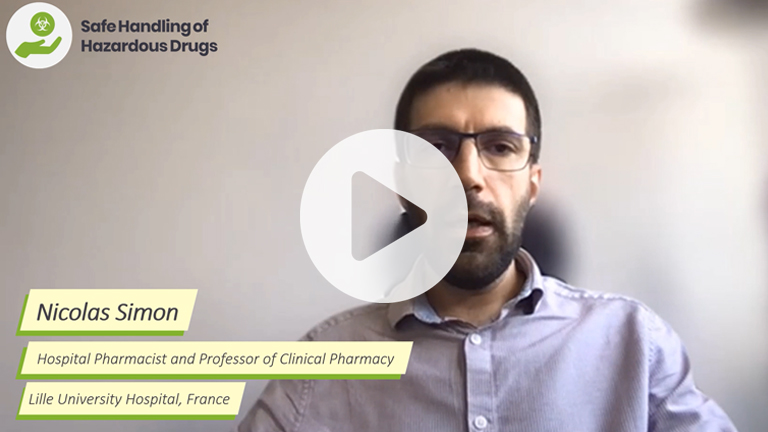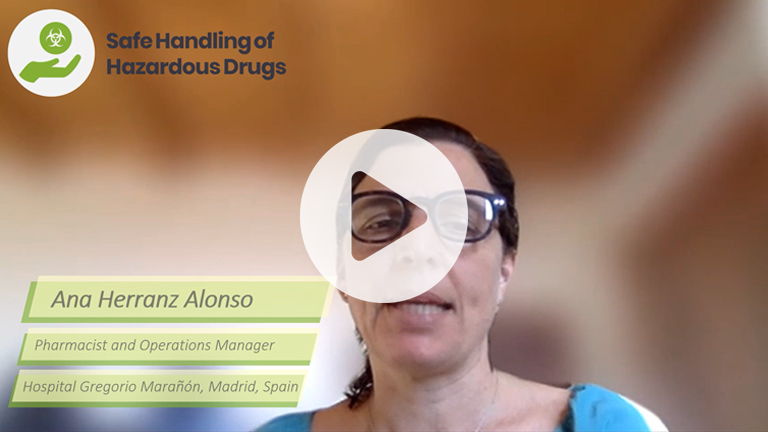OTHER RESOURCES
Editorial Article
Surface contamination monitoring of hazardous drugsInfographic
Monitoring hazardous drug surface contaminationEnvironmental Wipe Sampling – Personnel and Practices
The 2020 Safe to Touch Consensus Conference on Hazardous Drug Surface Contamination culminated in 11 consensus statements and recommendations that now form the basis for educating professionals about hazardous drug (HD) surface contamination and inform the development of surface contamination monitoring protocols.1
Along with establishing that administrative and engineering controls should be implemented where necessary, a key consensus was that comprehensive, setting-specific wipe sampling plans should be implemented. Wipe sampling is used to determine baseline contamination, screen for occupational exposures and evaluate cleaning procedures so that improvements to protective measures and equipment can be made where necessary.2 For an effective surface contamination monitoring programme, it is important to set out who is responsible for each aspect of the process.
Who is responsible for wipe sampling?
Every healthcare setting that handles HDs should develop a policy for monitoring surface contamination. These policies should be interdisciplinary in nature, involving various stakeholders and led by an experienced leader in the HD area.1 Pharmacists, technicians, nurses and physicians should collaborate to choose the sites of potentially contaminated areas where wipe sampling will take place.3 Another aspect of these policies should be identifying the individuals who will be ultimately responsible for performing the environmental wipe sampling.1 It has been recommended that one person should be designated to collect all of the wipe samples according to instructions from the laboratory, which will analyse the samples.3,4 Using one person for sample collection minimises variability and ensures consistency of sampling over time.4 This person could be an environmental health and safety staff member, occupational health and safety manager, pharmacy department director, or another staff member.3,4
Wipe sampling risk assessment
Just as wipe sampling is useful for assessing the risk to healthcare workers who come into contact with HDs, it is important to consider the risks to staff who carry out environmental sampling. Hazard analysis should guide the exposure controls used during sample collection, such as personal protective equipment (PPE).5 Exposure to HDs used in the site of monitoring, and elements of the sampling process itself such as volatile solvent wetting agents, should be considered and should not exceed occupational or safety exposure limits.5 It is also important that the person designated to carry out monitoring be trained on the particular sampling technique and how to use exposure controls properly.5
The wipe sampling process
Surface wipe samples can be analysed using either analytical or immunochemical tests, and robust sampling policies should employ both techniques.1 Analytical tests such as high-performance liquid chromatography with mass spectrometry give quantitative results as to the level of surface contamination present but are time consuming and costly, requiring specially trained personnel to operate equipment.6 Immunochemical tests by contrast only give qualitative results for selected HDs, confirming either the presence or absence of contamination, but are easy to use and give results quickly.7 A fluorescence covalent microbead immunosorbent assay has been demonstrated for measuring multiple antineoplastic drugs and can be performed onsite, requiring limited training and a lower cost method for routine testing.6 A second type of qualitative test, the lateral flow immunoassay, can give results in under ten minutes and allows portable and easy testing with sensitive results that correlate well to analytical methods.7
Surface contamination monitoring policies should establish the frequency of wipe sampling required for each healthcare setting. Sampling should be carried out to determine a baseline, and then repeated at a minimum every 6 months, or more frequently if this is deemed necessary based on risk assessments carried out by each institution.8 Re-testing policies should also be put in place for instances where positive results are found.1
Auditing of wipe sampling and proper documentation is important to ensure longitudinal analysis of surface contamination, allowing for changes to be recognised and action to be taken.3 One person within a facility should be chosen to follow up on monitoring to make sure it is being carried out, along with recording details of the sampling and any major cleaning and decontamination procedures. 3
Understanding who is responsible for environmental wipe sampling, and best practises for an effective HD surface contamination monitoring programme is important to minimise potential harm to staff members and patients who may come into contact with HDs.
References
1. Gabay M, Johnson P, Fanikos J et al. Report on 2020 Safe to Touch Consensus Conference on Hazardous Drug Surface Contamination. Am J Health Syst Pharm. 2021. 78(17):1568-1575.
2. Kiffmeyer TK, Tuerk J, Hahn M et al. Application and assessment of a regular environmental monitoring of the antineoplastic drug contamination level in pharmacies – the MEWIP project. Ann Occup Hyg. 2013 May;57(4):444-55
3. Chabut C and Bussières JF. Characteristics of wipe sampling methods for antineoplastic drugs in North America: comparison of six providers. Pharm Technol Hosp Pharm. 2020. 5;1
4. Connor TH, Zock MD, Snow AH. Surface wipe sampling for antineoplastic (chemotherapy) and other hazardous drug residue in healthcare settings: Methodology and recommendations. J Occup Environ Hyg. 2016 Sep;13(9):658-67
5. NIOSH Manual of Analytical Methods. Surface Sampling Guidance, Considerations, and Methods in Occupational Hygiene. 2022. 5th Edition. Chapter SG.
6. Connor TH, Smith JP. New approaches to wipe sampling methods for antineoplastic and other hazardous drugs in healthcare settings. Pharm Technol Hosp Pharm. 2016 Sep;1(3):107-114.
7. Sarna, K. Best practices for monitoring hazardous drug contamination. Pharmacy Practice News. 2020. Available at: https://www.pharmacypracticenews.com/Review-Articles/Article/07-20/Best-Practices-for-Monitoring-Hazardous-Drug-Surface-Contamination/58875. Accessed February 2023.
8. United States Pharmacopoeia. General Chapter <800> Hazardous Drugs – Handling in Healthcare Settings. 2017. Available at: https://www.usp.org/sites/default/files/usp/document/our-work/healthcare-quality-safety/general-chapter-800.pdf.
Want to learn more about surface contamination? Check out these learning modules
Safe preparation and administration of hazardous drugs
Restricted content
Dr Nicolas Simon introduces his updated module which delves into the problem of decontaminating antineoplastic drug compounding facilities.
Restricted content
Dr Ana Herranz explores who is at risk of exposure to hazardous drugs, what precautions are put in place to protect them, who has responsibility for ensuring their safety and what guidelines and legislation exist to protect them. Watch her intro video or go direct to the module!

